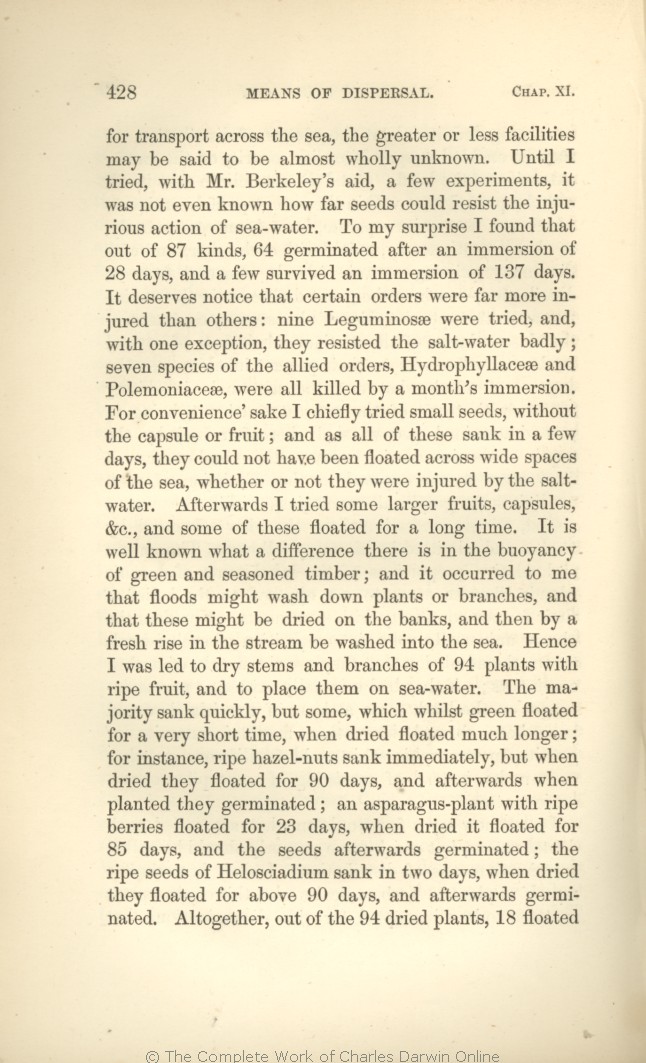for transport across the sea, the greater or less facilities | for transport across the sea, the greater or less facilities 1859 1860 1861 1866 1869 |
| the greater or less facilities for transport across the sea 1872 |
| Berkeley's 1859 1860 1861 1866 1872 | | Berkeleys 1869 |
| injurious 1859 1860 1866 1869 1872 | | inju- rious 1861 |
| injured 1866 1869 1872 | | affected 1861 |
| Polemoniaceæ, 1866 1869 1872 | | Polemoniacæ, 1861 |
| month's 1861 1866 1872 | | months 1869 |
| convenience' 1860 1861 1866 1872 | | convenience 1859 1869 |
| have been 1866 1869 1872 | | be 1859 1860 1861 |
| &c., 1859 1860 1866 1869 1872 | | &c, 1861 |
| might wash down 1859 1860 1861 1866 1869 |
| would often wash into the sea dried 1872 |
| branches, 1859 1860 1861 1866 1869 | | branches 1872 |
| and that these might be dried on the banks, and then by a fresh rise in the stream be washed into the sea. 1859 1860 1861 1866 1869 |
| with seed-capsules or fruit attached to them. 1872 |
| stems 1859 1860 1861 1866 1869 | | the stems 1872 |
| sea-water. 1860 1861 1866 1869 1872 | | sea water. 1859 |
| some, 1866 1869 | | some 1859 1860 1861 1872 |
| which 1859 1860 1861 1866 1869 | | which, 1872 |
| green 1859 1860 1861 1866 1869 | | green, 1872 |
| dried 1860 1861 1866 1869 1872 | | dried, 1859 |
| days, 1860 1861 1866 1869 1872 | | days 1859 |
| they 1859 1860 1861 1866 1869 | they 1872 |
| asparagus-plant 1866 1869 1872 | | asparagus plant 1859 1860 1861 |
| germinated; 1860 1861 1866 1869 1872 | | germinated: 1859 |
| Altogether, 1861 1866 1869 1872 | | Altogether 1859 1860 |
|









